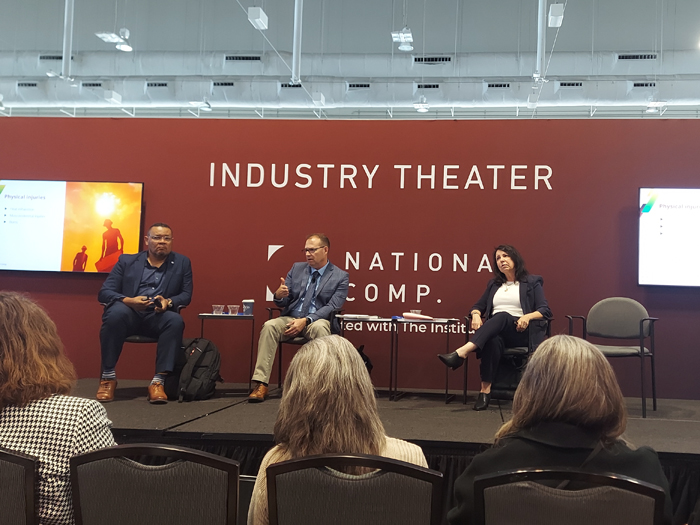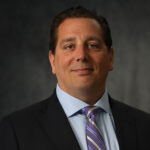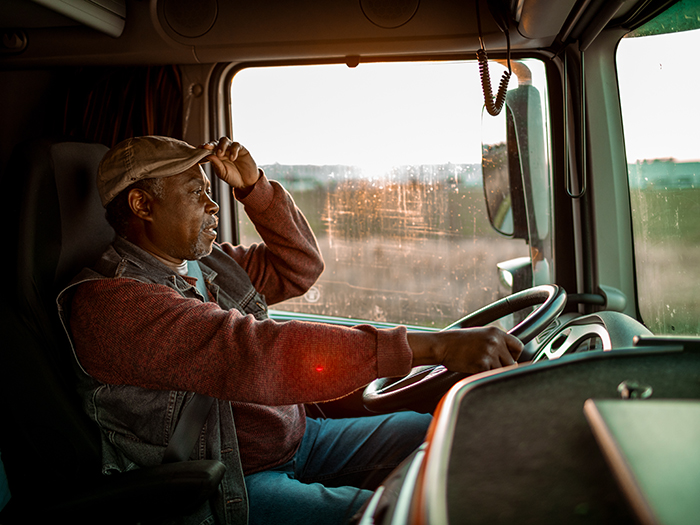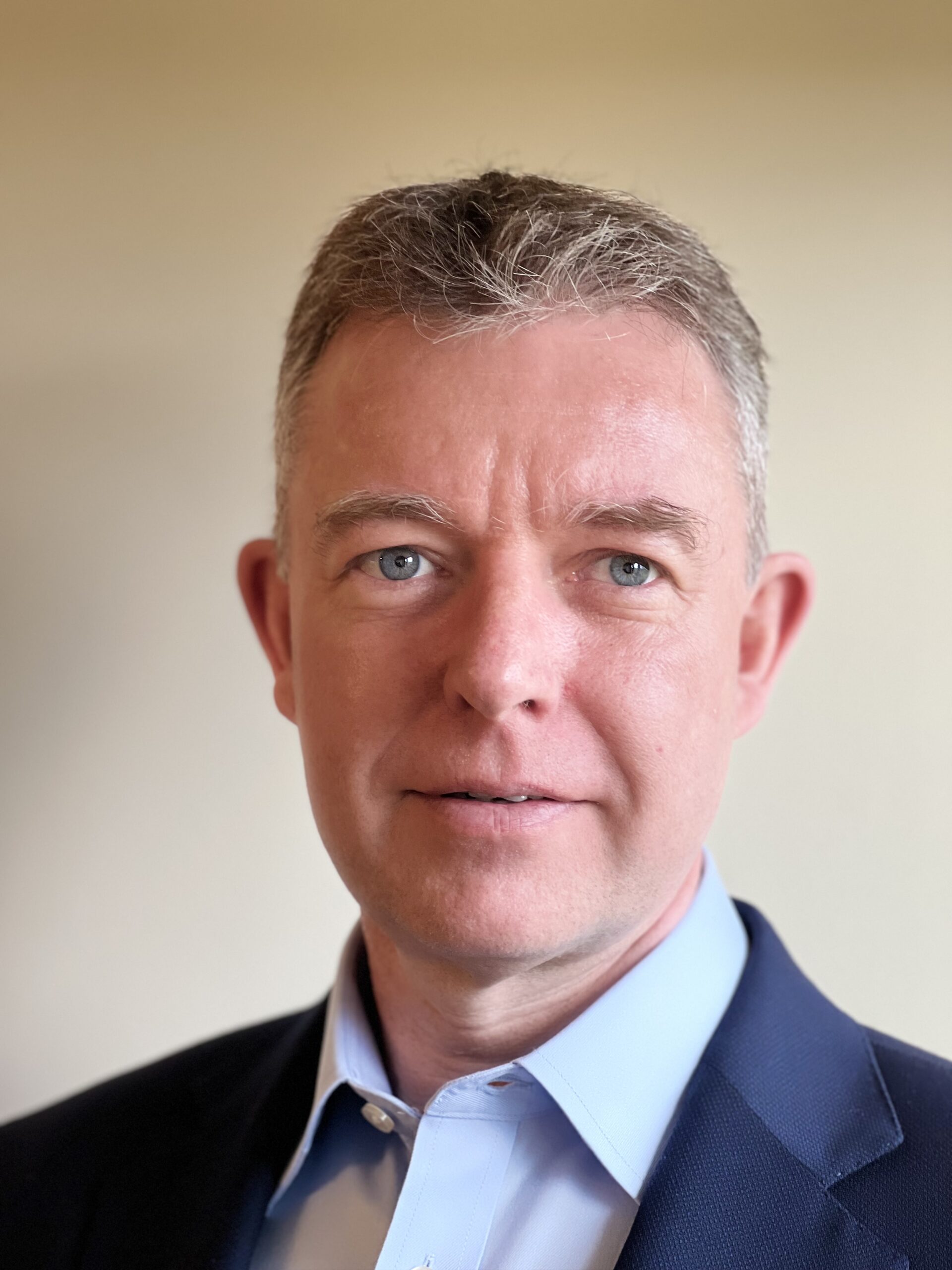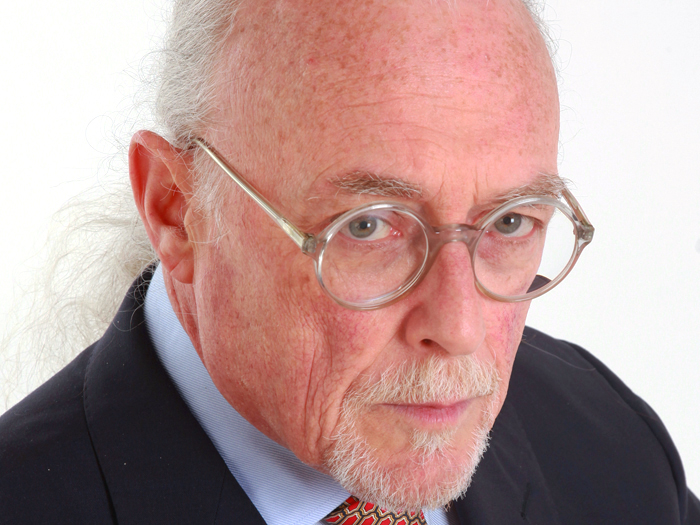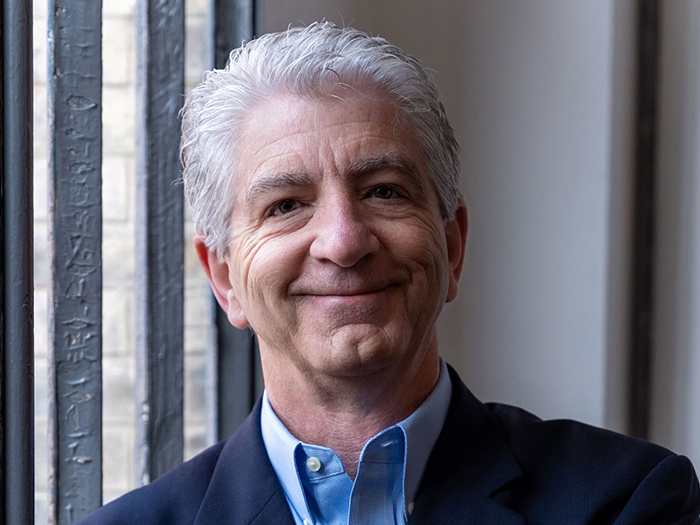Rising from the Ashes: Workers’ Compensation Insight from the Los Angeles Fires

In January of this year, Los Angeles faced the unthinkable: Roaring flames blanketed the city, spreading from county to county. Coupled with 90mph Santa Ana winds, the fires spread vast and wide, killing 31 residents, destroying 16,000 structures, and displacing tens of thousands of people.
“There were two fires burning independently of each other at the same time,” shared Tyrone Spears, division chief of workers’ compensation for the City of Los Angeles. “It was unbelievable; it looked like a warzone … people’s lives were changed forever.”
Among those whose lives are changed are the city workers who stepped up to stop the fires and cleaned debris when the flames settled. From first responders to public works employees, the City’s workforce jumped to action to protect their neighbors’ homes, lives, and livelihoods.
At National Comp 2025 in Nashville, Tenn., Spears, along with Dr. Robert Hall, medical director at Optum, and Demetra Johal, senior partner at Laughlin, Falbo, Levy & Moresi shared some of the aftermath of the fires and the impact its had on the LA workers that answered the call to help.
The Toll of Devastation on the Worker
In total, Spears shared during the session, “Rising from the Ashes: Workers’ Compensation Insight from the Los Angeles Fires,” the Palisades Fire saw 122 workers’ compensation claims. Of those, 80% were respiratory-related injuries; 15% were physical injuries, like slips and falls or burns; and the remaining claims were made up of other injuries like eye irritation or heat/skin rashes. But he knows that these numbers could still grow.
“Just to see those photos of the red plume of smoke over the city, it speaks volumes of what the people of California were breathing in,” shared Dr. Hall. He went further, breaking down the actual make-up of the air citizens and city workers breathed in the aftermath of the fires.
Volatile organic materials like formaldehyde. Metals like lead, chromium, silver — all these fine particulate matters were released into the air as a result of burning plastics, furniture and construction material.
“The problem with these fine particulate matter pieces [is] they are just too small,” said Dr. Hall. “They bypass all our body’s natural defense systems.”
This can lead to long-term effects and illnesses, including heart disease, lung conditions and a multitude of cancers. He added workers may not even see symptoms for years following exposure, likening it to the claims first responders have filed 20 years later following 9/11: “There could, honestly, be an indefinite amount of time.”
For Johal, the lasting medical impact of the fires isn’t just something she’s assessing professionally; the devastation is personal.
During the session, she showed attendees a video of a street in Altadena, Calif., a city just 14 miles away from Downtown LA. Gray and desolate, the video featured rubble where houses once stood and trees that were more soot than plant.
“Unfortunately, this is my neighborhood,” she shared. “In Altadena … we were never notified to evacuate. My house was about 150 feet from the base of the San Gabriel Mountains. The destruction was immense and was very quick. Most of us decided to leave around 9-10 pm at night, because we saw the flames rising.”
After the blaze, Johal joined her neighbors in sifting through the ashes of their homes, attempting to salvage what she could. She has since developed asthma, something she continues to deal with 11 months later.
“It made me think about the first responders. What’s going to happen to them? If [asthma] happened to me, what does that mean for the responders working in the aftermath?”
The Psychological Impact of Traumatic Events
Outside tangible, physical injuries lies the psychological impact of events like the Palisades and Eaton Fires. First responders are often first on the scene for trauma, whether that be a large wildfire, a medical emergency or other equally high-risk scenarios. Protecting workers against psychological distress, PTSD and other related mental health claims is crucial.
“We know that the rate at which PTSD is being claimed and accepted is growing,” Dr. Hall said.
Being exposed to traumatic things day after day can add to the cumulative PTSD first responders and other city workers face when there are high-stake events occurring.
“Those folks have to be monitored for this, because when someone develops PTSD from any incident, the risk of depression goes up, the risk of anxiety goes up. They have a higher risk for substance abuse and a higher risk of suicide,” Dr. Hall said. “It’s not just the diagnosis of PTSD, it’s also the things that can stem from that.
Lessons Learned
Spears noted that while not every city is in the throes of a devastating wildfire, every city has its risks to address. In times when large-scale, high-risk scenarios occur, its paramount to be prepared.
This wasn’t just an isolated incident, he said. “In the City, there were over 20 separate fires … escalated because of the winds.
“From a risk standpoint, from an employer standpoint, we were addressing this while running out of resources,” he added. The fire blazed from Jan. 7 through the 31st, when it was deemed fully contained. “We still had a city to run and a city to protect. The day-to-day fire department response calls were still coming in, but 70% of resources were going to the fires.
“There are so many things outside the events themselves that you have to think about,” Spears said.
From a claims perspective, there are also many elements to balance. Johal noted that for the LA fires, they had to ask themselves the who, what, where, when, and why of each claim.
“Was the responder was on duty? Were they on site?” she said. Luckily, the LA first responder system has it set so that employees whereabouts are consistently logged, making it easier to place employees at each site.
There’s also a difficulty in distinguishing wildfire-related injuries from pre-existing conditions, which is why it’s important to have a medical history review and objective evaluations, as well as health care providers involved in determining causation, Johal added.
Related Reading: A Monumental Loss: Fine Art Collectors and Museums Grapple with the Aftermath of the Palisades Blaze
Spears said that in times of large-scale emergency, it’s important for the workers’ comp team to be thorough, but empathetic.
“We accepted 90% of the claims filed,” he said. “We knew we’d face a shortage of pulmonary specialists in the workers’ comp system, so we allowed them to see general health.”
It was about getting treatment first, and then getting the workers’ compensation part up to speed as the claim progressed.
“You want to make sure you do a through investigation, but also be empathetic,” said Spears. “Ask yourself, are you really thinking about the person who was impacted?” &

